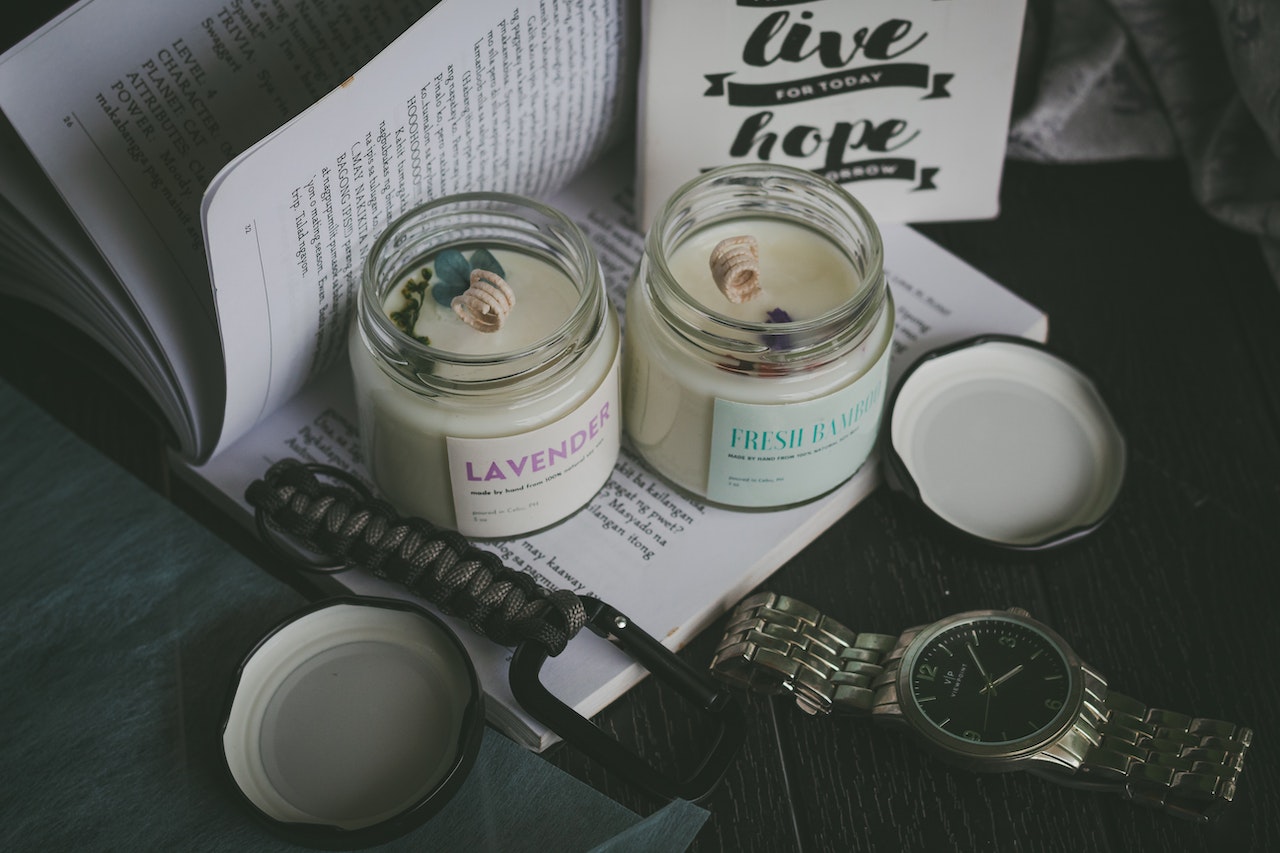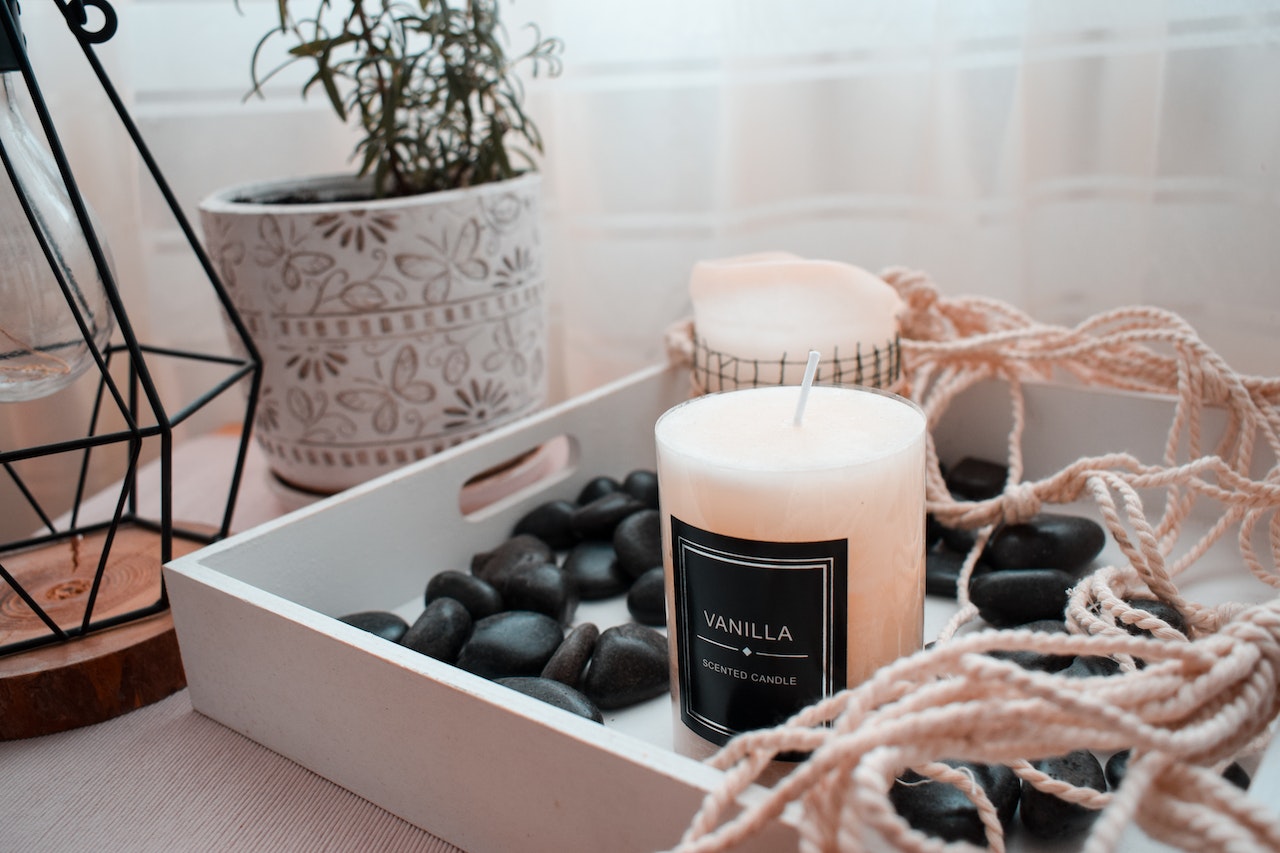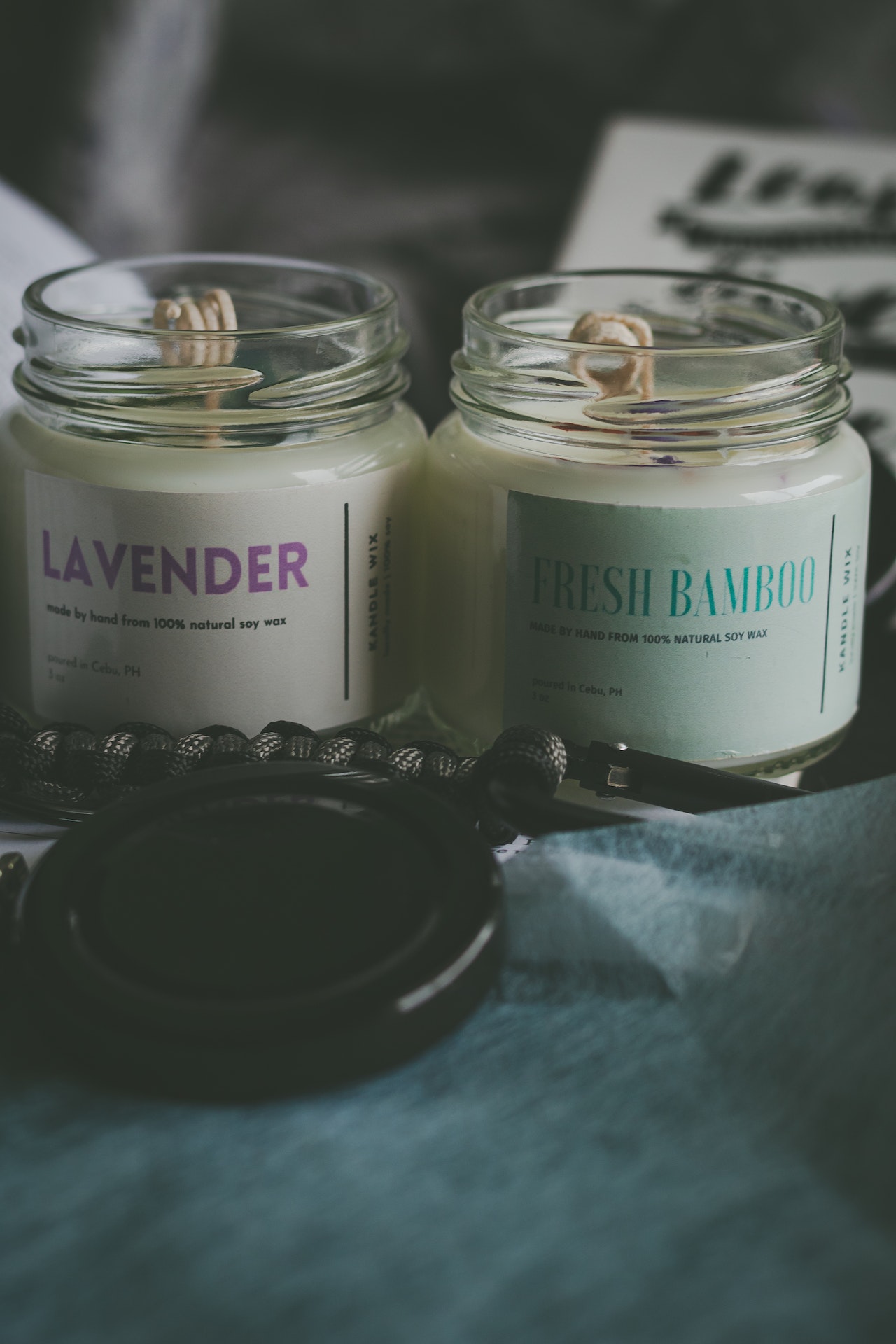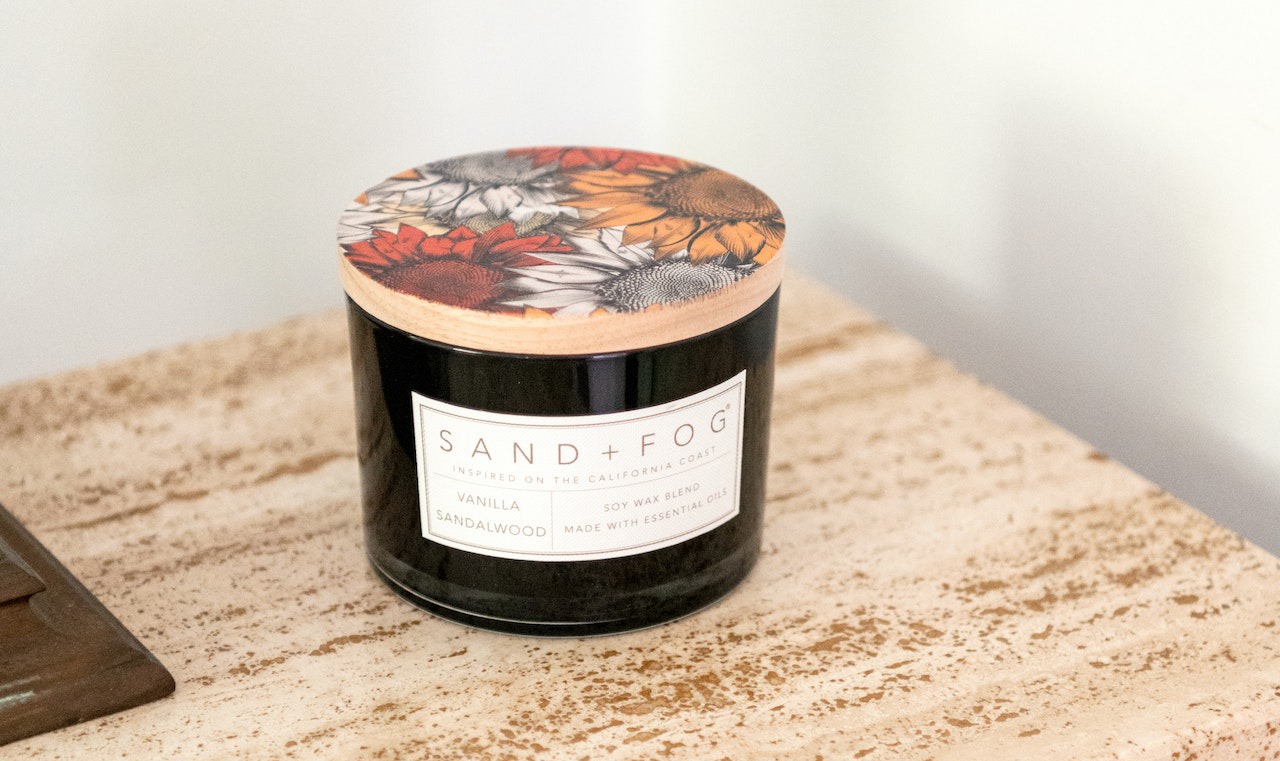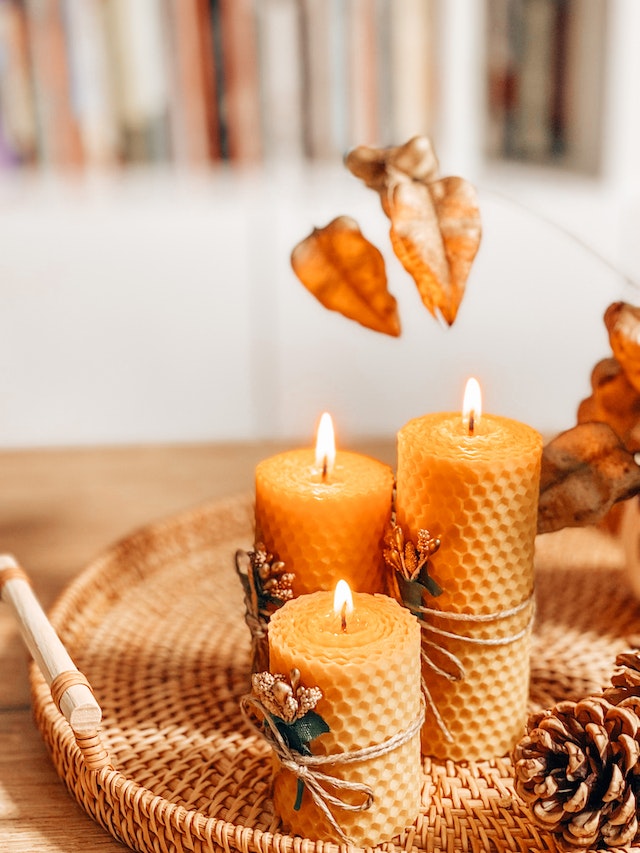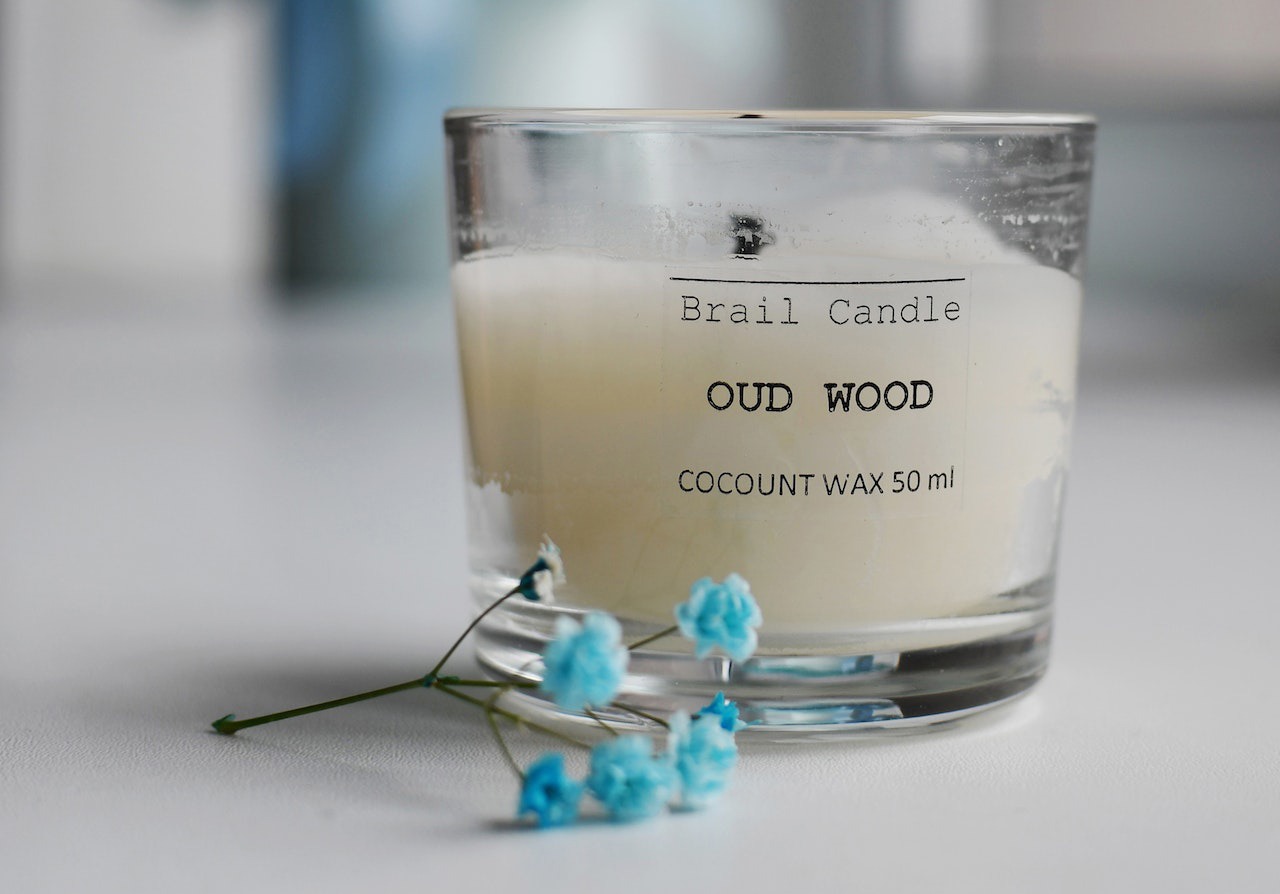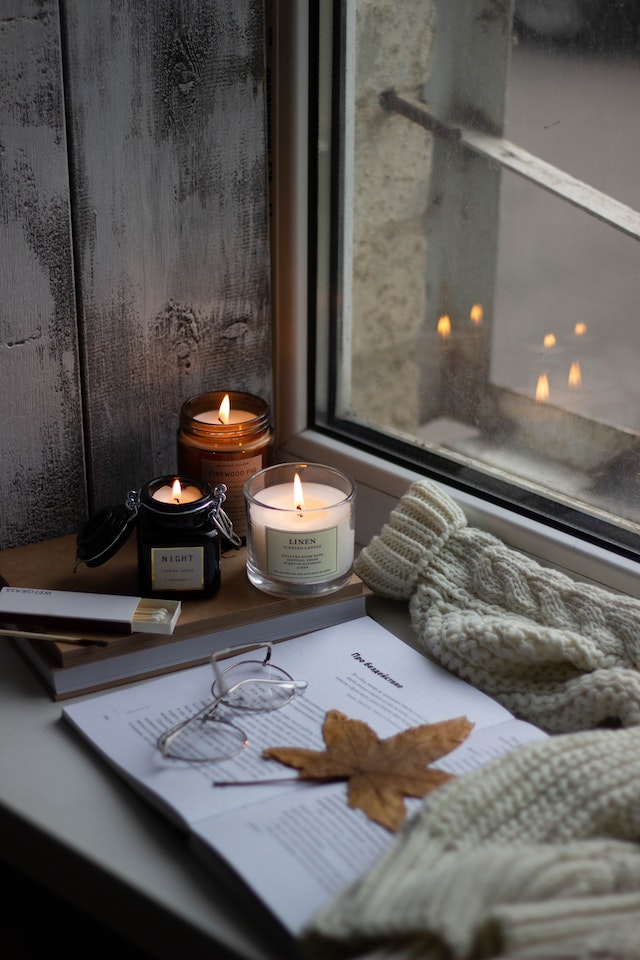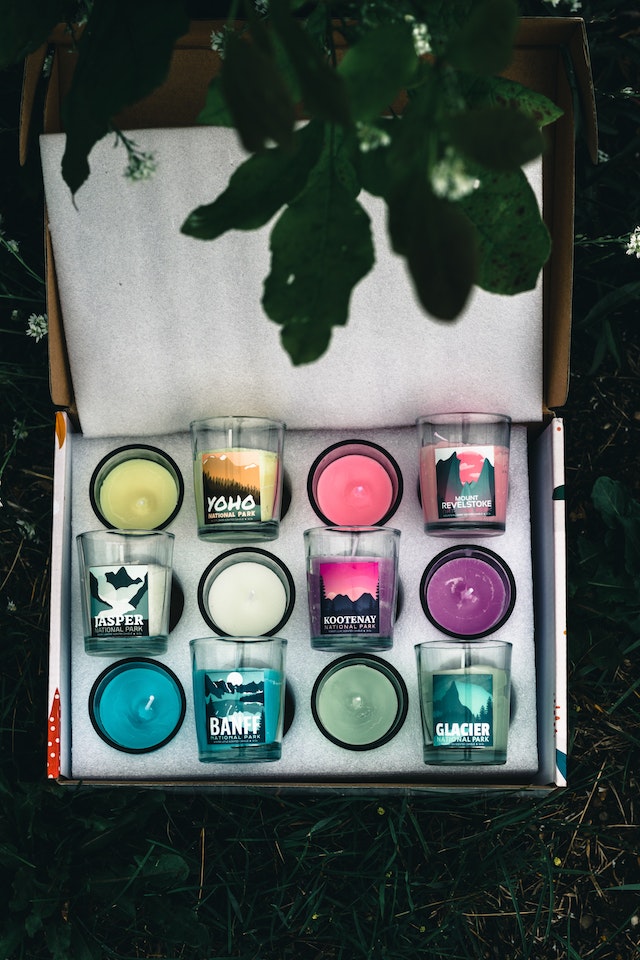Scented candles have become synonymous with elevating the ambiance of our living spaces, combining aesthetics with functionality in a captivating manner. What once served as a basic source of illumination has now evolved into a sophisticated means of both decorating and fragrancing our environments. The journey from standard candles to scented ones has transformed these everyday items into powerful tools for setting the mood and enhancing the sensory experience within our homes.
Traditionally, candles were essential for providing light after sunset, but the introduction of scented versions revolutionized their purpose. This shift not only introduced a new layer of sensory delight but also ushered in the concept of home scenting as a form of personal expression and interior design. The myriad options available today cater to a diverse range of desires, from eliminating unpleasant odors to creating a serene ambiance for relaxation, or infusing spaces with a romantic allure.
Selecting the right scented candle has become a personalized journey, where individuals explore a spectrum of fragrances, from floral and fruity to woody and exotic, to find the ones that resonate with their preferences and intentions. These candles have transcended their utilitarian origins, evolving into intricate decorative pieces that enhance both the visual and olfactory aspects of a room.
What Are Scented Candles?
Scented candles are candles that are infused with fragrance to release pleasant aromas when burned. They are designed not only to provide illumination but also to create a specific ambiance and olfactory experience in indoor spaces. Scented candles come in a wide variety of scents, ranging from floral and fruity to woody and spicy, catering to diverse preferences.
These candles are typically made from wax, such as paraffin, soy, or a blend of waxes, which serves as the fuel source for the flame. What sets scented candles apart is the addition of fragrance oils or essential oils during the manufacturing process. These oils contain aromatic compounds that are released into the air as the candle burns.
When a scented candle is lit, the heat from the flame causes the wax to melt, and the fragrance oils within the wax are vaporized. These volatile molecules mix with the surrounding air, diffusing the scent throughout the room. This creates a multi-sensory experience, combining the visual beauty of a flickering flame with the captivating aroma of the chosen scent. Scented candles are often used for relaxation, mood enhancement, or to mask less pleasant odors in indoor environments.
Top 5 Most Famous Scents of Scented Candles
The most famous scents of scented candles often reflect a combination of timeless classics and popular trends. While preferences can vary, here are five of the most renowned scents that have gained widespread recognition:
1. Vanilla
Vanilla scented candles envelop spaces in a timeless embrace of comfort and warmth. The familiar and soothing aroma of vanilla evokes feelings of coziness, making it a cherished choice for creating inviting environments. Whether used during quiet moments of relaxation or to infuse gatherings with a sense of familiarity, vanilla-scented candles radiate a gentle and timeless ambiance that appeals to a wide range of preferences and occasions.
2. Lavender
Lavender scented candles transport spaces into realms of tranquility and calm. With its aromatic notes known for their stress-relieving properties, lavender imparts a serene atmosphere, making these candles a cherished companion during moments of relaxation or meditation. The soothing scent promotes a sense of well-being, inviting individuals to unwind and find solace in its gentle embrace. Lavender scented candles infuse spaces with a delicate, floral aroma that encourages a peaceful state of mind and serves as a soothing balm for the senses.
3. Citrus (e.g., Orange, Lemon, Grapefruit)
Citrus scented candles infuse spaces with a vibrant and invigorating energy. Bursting with the zesty essence of fruits like oranges, lemons, and limes, these candles elevate the ambiance with their refreshing and uplifting aromas. The bright and crisp notes of citrus scents awaken the senses, making them a popular choice for creating a lively atmosphere and promoting a sense of positivity. Whether used to add a lively touch to morning routines or to refresh indoor environments, citrus scented candles evoke the essence of sunshine and vitality, making them a delightful choice for spaces in need of a lively boost.
4. Sandalwood
Sandalwood scented candles bring an air of sophistication and tranquility to any setting. With its warm and woody aroma, sandalwood creates a sense of grounding and relaxation, making these candles a popular choice for spaces where a touch of elegance and calm is desired. The distinct fragrance of sandalwood evokes images of tranquil forests and ancient rituals, infusing rooms with a timeless quality. Sandalwood scented candles offer a sensory journey that invites individuals to unwind, reflect, and savor moments of serenity amidst the complexities of modern life.
5. Fresh Linen
Fresh linen scented candles evoke the simple luxury of crisp cleanliness and rejuvenation. Capturing the essence of freshly laundered fabrics, these candles infuse spaces with an airy and revitalizing ambiance. The clean and invigorating scent of fresh linen transports individuals to moments of purity and simplicity, making these candles a popular choice for creating a sense of renewal and calm. Whether used to brighten up everyday spaces or to add a touch of tranquility to special occasions, fresh linen scented candles embody the rejuvenating allure of freshly laundered linens, making them a staple for those seeking a light and uplifting fragrance experience.
Types of Wax for Scented Candles
Several types of wax are commonly used for making scented candles, each with its own set of characteristics. The choice of wax can affect the candle’s burn time, scent throw (the strength of the fragrance release), appearance, and even its eco-friendliness. Here are some of the most popular types of wax used for scented candles:
1. Paraffin Wax
Paraffin wax is a traditional choice for candles due to its affordability and ease of use. It has a high scent throw, meaning it can carry and release fragrance effectively. However, paraffin is a byproduct of petroleum refining and may release soot and potentially harmful chemicals when burned.
2. Soy Wax
Soy wax is made from soybean oil, which makes it a natural resource that is also good for the environment. It burns cleanly and slowly, resulting in a longer-lasting candle. Soy wax also has a good scent throw, though it might not be as strong as paraffin. It’s a popular choice for those looking for more environmentally friendly options.
3. Beeswax
Beeswax is a natural wax generated by honeybees. It burns with a subtle honey-like scent and emits negative ions that can help purify the air. Beeswax candles have a slower burn rate and a warm, natural appearance. While they tend to have a lighter scent throw compared to paraffin or soy candles, they are prized for their natural qualities.
4. Palm Wax
Palm wax is derived from palm oil and is known for producing unique, crystalline patterns as it cools. It has a good scent throw and a longer burn time, but concerns have been raised about the environmental impact of palm oil production, particularly when it’s not sustainably sourced.
5. Coconut Wax
Coconut wax, which is made from coconut oil, is another choice that is good for the environment. It has a creamy texture, good scent throw, and a relatively clean burn. Coconut wax blends well with fragrances and can create a luxurious appearance.
6. Blended Waxes
Many candles use a combination of different waxes to achieve a balance of characteristics. For example, a blend of soy and paraffin might offer the scent throw of paraffin with the eco-friendliness of soy.
How Are Scented Candles Made?
Scented candles are crafted through a meticulous process that involves careful selection of materials, precise measurements, and skilled techniques. Here’s an overview of how scented candles are made:
1. Materials Preparation
Materials preparation is a crucial initial phase in the creation of scented candles, where the foundation for the final product is carefully laid. This process involves the thoughtful selection of key components, including the type of wax to be used—such as paraffin, soy, or beeswax—each with its distinct characteristics that will impact burn quality and appearance. Equally important is the choice of fragrance, whether from fragrance oils or essential oils, which will define the candle’s aromatic profile. Additionally, selecting an appropriate wick size and material, tailored to the candle’s size and wax type, ensures proper burning performance. This stage sets the stage for the artistic and technical journey ahead, shaping the sensory experience that the scented candle will ultimately offer.
2. Melting and Mixing
The process of melting and mixing is a pivotal step in crafting scented candles, where the raw ingredients meld to form the foundation of the final product. During this phase, the chosen wax is delicately melted using specialized equipment or a double boiler setup, maintaining precise temperatures to prevent overheating. Fragrance oils or essential oils are then meticulously incorporated into the molten wax, ensuring an even dispersion of scents throughout. This fusion of wax and fragrance marks the convergence of art and science, as the harmonious blending of these elements shapes the candle’s character, influencing not only its olfactory allure but also its visual and tactile aspects. The result is a homogenous concoction that holds the promise of captivating sensory experiences yet to be unveiled.
3. Coloring (optional)
Coloring is a creative facet of scented candle crafting that adds visual appeal and personalization to the final product. By introducing liquid or solid dyes into the melted wax, the candle’s aesthetic presence is transformed, infusing it with hues that resonate with its intended mood or theme. This optional step allows candle makers to explore artistic expression, creating candles that reflect diverse palettes and styles. Whether opting for vibrant shades or understated tones, the careful addition of color contributes to the overall sensory experience, enhancing the interplay between the candle’s appearance and the ambiance it evokes when illuminated.
4. Prepping the Container
Prepping the container marks a pivotal stage in scented candle production, where the physical foundation for the candle’s form is established. This step involves precise attention to detail, including the centered placement of the wick within the container, ensuring it is held securely either through a wick holder or adhesive. In cases where the container’s surface might impact adhesion, preheating is undertaken to mitigate potential issues. This meticulous preparation lays the groundwork for an even and balanced pour of the melted wax, setting the stage for the candle’s transformation from liquid to solid. The careful orchestration of these elements ensures that the candle’s structural integrity and aesthetic presentation will harmonize seamlessly when the wax is poured.
5. Pouring the Wax
Pouring the wax is a pivotal moment in the creation of scented candles, where the liquid essence of the candle takes shape within its chosen vessel. With meticulous care, the fragranced and, if desired, colored wax is gently poured into the prepared container, enveloping the centered wick. This delicate process requires precision to ensure an even distribution of wax and to avoid disturbing the wick’s position. As the wax fills the container, it begins to solidify, transforming into the foundation upon which the candle’s sensory journey will unfold. This step marries technical skill with creative vision, as the flowing wax embodies the potential of the scented candle, encapsulating the essence that will be released into the air as it burns.
6. Second Pour (if necessary)
The concept of a second pour, while not always necessary, is a thoughtful consideration in scented candle making that speaks to the commitment to crafting a refined product. After the initial wax pour and subsequent cooling, depressions or uneven surfaces may form due to wax contraction. In response, some candle makers choose to perform a second pour, carefully reintroducing molten wax to fill these imperfections and create a more uniform appearance. This step reflects the artisanal nature of candle crafting, where attention to detail and a dedication to achieving a flawless result are paramount. The second pour demonstrates the pursuit of excellence in both aesthetics and performance, ensuring that the candle will burn consistently and exhibit an appealing visual cohesion.
7. Trimming and Finishing
Trimming and finishing represent the final touches in the creation of scented candles, where meticulous care is taken to present a polished product ready to infuse spaces with enchanting aromas. After the candle has cooled and solidified, the wick is trimmed to a precise length—typically around 1/4 inch above the wax surface—to ensure optimal burning performance and minimize excess smoke. This delicate trimming aligns with the candle’s intended burn rate and helps maintain a clean, even flame. Following this, labels conveying scent information, safety guidelines, and branding may be affixed to the candle container. The culmination of these details embodies the dedication and artistry poured into every step, resulting in a finished candle that not only emanates alluring fragrances but also boasts a visually pleasing appearance, promising a sensory journey awaiting discovery.
8. Quality Control
Quality control is an essential checkpoint in the production of scented candles, ensuring that each creation meets the highest standards of craftsmanship and performance. During this stage, every aspect of the candle is carefully assessed, from fragrance distribution and color consistency to wick placement and structural integrity. Skilled artisans meticulously inspect each candle, ensuring that the scent throw matches expectations and that the burn performance will be safe and satisfactory for consumers. Quality control safeguards against defects or inconsistencies, guaranteeing that the final product is not only aesthetically pleasing but also functional, providing an enchanting sensory experience that aligns with the candle maker’s vision and the customer’s expectations.
How Do Scented Candles Work?
Scented candles work by harnessing the heat generated from a burning wick to release fragrant molecules from the candle’s wax into the surrounding air. Here’s how the process unfolds:
1. Wax Melting
Wax melting is a fundamental process that occurs when a candle is lit, transforming solid wax into a liquid state. As the flame ignites and generates heat, it is transferred to the nearby wax. This infusion of heat causes the structured arrangement of wax molecules to break down, allowing them to gain energy and vibrate more freely. Once the wax reaches its specific melting point, it transitions from a solid to a liquid phase, forming a pool of molten wax around the base of the wick. This liquefied wax is drawn up the wick by capillary action, where it is vaporized by the flame’s heat and undergoes combustion, producing both the light and heat of the flame as well as releasing the aromatic fragrance molecules infused within the wax.
2. Fragrance Activation
Fragrance activation within scented candles is a captivating process that unfolds when the candle is lit. As the heat from the flame melts the surrounding wax, it triggers the release of aromatic molecules encapsulated within the wax. These fragrance molecules, carefully chosen from oils or essential oils during the candle-making process, become activated in response to the rising temperature. As the wax transitions from solid to liquid, the bonds holding these aromatic compounds loosen, allowing them to escape into the air as vapor. This transformation marks the beginning of a sensory journey, where the fragrance molecules mix with the environment, creating a harmonious symphony of scents that infuse the atmosphere and engage our olfactory senses, enriching our experiences and surroundings.
3. Evaporation
Evaporation is a pivotal stage in the dynamic process of scented candles, where the melted wax undergoes a transformative journey from liquid to vapor. As the wax is heated by the candle’s flame, its molecules gain energy and move more vigorously. At a critical temperature, these molecules break free from their liquid state, transitioning into a gaseous phase. This phase change liberates the fragrance molecules that were intermingled within the wax, allowing them to disperse into the surrounding air as aromatic vapor. This process of evaporation not only gives rise to the delightful scents that characterize scented candles but also creates an immersive and sensorial environment, enhancing our connection with the space and enveloping us in an alluring olfactory embrace.
4. Dispersion
Dispersion is the enchanting culmination of a scented candle’s alchemical dance, where fragrant molecules liberated through the process of evaporation intermingle with the air, creating a symphony of scents that gracefully diffuse throughout the environment. The kinetic energy of these vaporized fragrance compounds propels them into the surrounding atmosphere, where they embark on a journey dictated by air currents and movements. This dispersion process ensures that the captivating aroma produced by the candle reaches every corner of the room, transforming the ambiance and enveloping individuals in a multi-sensory experience. The artful diffusion of these fragrant notes adds a dimension of delight to the visual allure of the candle’s flame, allowing us to savor the ethereal beauty of scent itself.
5. Inhalation
Inhalation marks the transformative bridge between the scented candle’s essence and our perception. As the aromatic molecules, meticulously released through the processes of wax melting, fragrance activation, evaporation, and dispersion, gracefully waltz through the air, they find their way to our olfactory receptors. Inhaling the surrounding atmosphere, we draw these delicate fragrant compounds into our noses, where they interact with specialized sensory cells. These cells transmit the intricate palette of scents to the olfactory bulb in our brain, unraveling a symphony of sensations that evoke emotions, memories, and connections. This intimate interaction of inhaling the fragrant aura of a scented candle creates a profound sensorial tapestry, enhancing our surroundings with captivating aromas and enriching our experiences with the magic of scent.
6. Sensory Experience
The sensory experience ignited by scented candles is a captivating interplay of elements that enrapture our senses and transform our environment. From the mesmerizing dance of the flickering flame casting a warm glow to the intricate fusion of aromatic molecules released into the air, scented candles create a harmonious symphony for both sight and smell. As the wax melts and fragrances are unveiled, our olfactory receptors delicately capture the scents, weaving a tapestry of emotions, memories, and sensations in our minds. This orchestrated fusion of visual beauty and captivating aromas elevates any space into a sanctuary of enchantment, where we can immerse ourselves in the evocative power of scent, allowing it to shape our mood and perceptions, and ultimately enveloping us in a sensorial realm uniquely curated by each scented candle.
The Benefits of Scented Candles
Scented candles offer a range of benefits that extend beyond their visual and aromatic appeal. The following are some of the benefits of using scented candles:
1. Aromatherapy
Aromatherapy, facilitated by scented candles infused with essential oils, harnesses the therapeutic potential of scent to promote emotional and physical well-being. As these candles burn, they emit fragrant molecules that are inhaled and interact with the brain’s limbic system, which governs emotions and memories. Different scents, like lavender for relaxation or eucalyptus for clarity, can evoke specific responses, such as calming nerves or boosting focus. Aromatherapy scented candles provide a simple and accessible way to create a soothing environment, encouraging relaxation, stress reduction, and mood enhancement through the power of scent.
2. Ambiance
Scented candles infuse spaces with a captivating ambiance that goes beyond visual aesthetics. The soft glow of the candlelight casts a warm and welcoming atmosphere, while the delicate fragrance envelops the air, creating a multisensory experience. Whether used for unwinding after a long day, setting a romantic tone, or enhancing special occasions, scented candles add a layer of depth to any environment. Their gentle flicker and alluring scent create an inviting sanctuary, inviting individuals to immerse themselves in a world of relaxation, comfort, and enchantment.
3. Stress Relief
Scented candles serve as soothing companions on the journey to stress relief and relaxation. When lit, these candles release fragrances that have been carefully selected for their calming properties, such as lavender, chamomile, or vanilla. As the gentle scents fill the air, they engage the senses and stimulate the brain to release endorphins, the body’s natural “feel-good” chemicals. This sensory experience, combined with the soft, ambient lighting, creates a serene environment that encourages deep breathing, mindfulness, and a break from the stresses of daily life. Scented candles offer a serene retreat, allowing individuals to unwind, find solace, and regain balance in the midst of modern demands.
4. Improved Focus
Scented candles can play a role in sharpening focus and concentration. Certain fragrances, such as rosemary, peppermint, or citrus, have been associated with increased alertness and cognitive clarity. When these scents are released through the gentle burn of a candle, they can stimulate the mind and enhance mental acuity. The combination of visual engagement with the candle’s flame and the invigorating scent can create an optimal environment for tasks that require attention and focus. Whether used during work, study sessions, or creative endeavors, scented candles can be a sensory tool to help individuals achieve a heightened state of awareness and improved cognitive performance.
5. Sensory Experience
Scented candles offer a multi-dimensional sensory experience that transcends the ordinary. The interplay of soft candlelight and delicate fragrances creates a symphony for the senses, inviting individuals to immerse themselves in a world of heightened perception. The visual allure of the flickering flame dances in harmony with the captivating aroma, elevating the ambiance and fostering a deep connection with the environment. This immersive encounter not only delights the sense of smell but also engages sight and touch, as the warmth of the candle and the tactile presence of its container enhance the overall experience. Scented candles transform spaces into havens of sensory exploration, allowing individuals to escape the mundane and embrace a journey of relaxation, nostalgia, and delight.
6. Masking Odors
Scented candles excel as masters of ambiance by skillfully masking unwanted odors and infusing rooms with delightful fragrances. Whether it’s the lingering scent of cooking, pet-related odors, or other unpleasant smells, scented candles work by overpowering these nuisances with their captivating fragrances. The molecules released by the burning candle interact with and neutralize the less desirable odors, leaving behind a refreshing and inviting atmosphere. This clever olfactory transformation not only disguises unpleasant scents but replaces them with the soothing embrace of carefully chosen aromas, creating a more enjoyable and harmonious environment for all who enter.
7. Personalization
Scented candles offer a canvas for personalization, allowing individuals to curate their spaces with fragrances that resonate with their preferences, memories, and moods. With an extensive array of scents ranging from floral and fruity to earthy and exotic, each person can find a scent that encapsulates their unique identity. This personalized selection of fragrances enables individuals to tailor their surroundings to suit different occasions, seasons, or even emotions. By choosing scented candles that align with their personal tastes, individuals can infuse their living spaces with a signature aroma, creating an atmosphere that reflects their individuality and envelops them in a cocoon of comfort and familiarity.
8. Gifts
Scented candles make for thoughtful and versatile gifts that transcend mere material offerings. The intricate dance of captivating scents and enchanting light found within these candles carries with it the promise of evoking emotions and memories. This makes scented candles ideal gifts for various occasions, from birthdays to holidays, as they offer a sensory experience that resonates on a personal level. The wide range of available scents allows gift-givers to choose fragrances that hold significance for the recipient or evoke a particular sentiment. Whether presented individually or as part of a larger gift, scented candles bring an element of warmth, care, and a touch of luxury that is sure to be appreciated and cherished.
9. Enhanced Sleep
Scented candles contribute to enhanced sleep by creating a serene prelude to restful slumber. Scents like lavender, chamomile, or cedarwood, known for their calming and relaxation-inducing properties, can be harnessed to create a tranquil bedtime environment. As the candle burns, these fragrant molecules gently infuse the air, sending signals to the brain that promote relaxation and stress reduction. This olfactory journey prepares the mind and body for a peaceful transition into sleep, setting the stage for a deeper and more rejuvenating rest. By incorporating scented candles into a bedtime routine, individuals can create a soothing ritual that soothes the senses and paves the way for a restful night’s sleep.
10. Decoration
Scented candles serve as exquisite decorative elements that merge visual elegance with sensory allure. Beyond their practical use, these candles enhance interior spaces with their captivating containers, colors, and flickering flames. Their presence not only adds a touch of sophistication but also contributes to the overall aesthetic of a room. Scented candles can be strategically placed to complement existing decor or become focal points, creating cozy nooks or charming table settings. The interplay of soft candlelight and enticing fragrances transforms spaces into havens of beauty and sensory delight, infusing both style and substance into the art of decoration.
Conclusion
Scented candles orchestrate an intricate symphony of sensory delights, captivating both sight and smell with their mesmerizing dance of light and fragrance. The journey begins with the careful selection of wax, fragrance, and wick, followed by the transformative stages of melting, fragrance activation, evaporation, and dispersion. As the candle’s flame ignites, wax melts, and fragrances unfurl, a harmonious collaboration of science and artistry takes center stage. The process of evaporation liberates fragrant molecules, which gracefully disperse into the air, creating an immersive olfactory experience that enchants our senses and transforms our surroundings. With the alchemy of warmth, aroma, and ambiance, scented candles illuminate spaces with a symphony of scents, forging connections with memories, emotions, and personal preferences. The unique interplay of these elements unravels the secret behind their magic, weaving an enduring tapestry that elevates the ordinary into the extraordinary.

